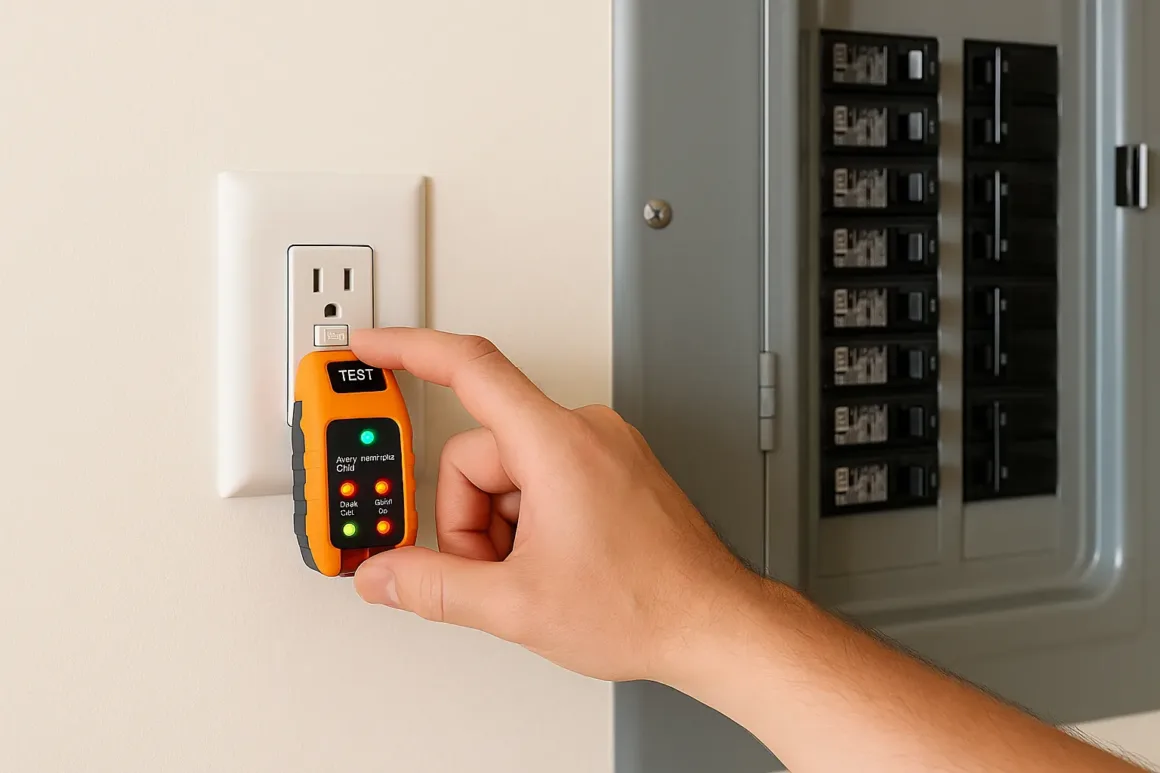Table of Contents Show
You’ve probably walked past that slightly warm outlet in your hallway a hundred times without thinking twice about it. But here’s the thing—your electrical system is constantly sending you signals, and most homeowners miss them completely. That warmth? It’s not normal. Neither is that faint buzzing sound coming from your light switch, nor the occasional flicker when you turn on the microwave.
Your home’s electrical system is like a nervous system. When something’s wrong, it’ll tell you. The trick is learning its language before it screams at you in the form of sparks or, worse, an electrical fire.
The Appliance Graveyard Rule
Here’s a safety tip you won’t find in your typical electrical guide: create what can be referred to as an “appliance graveyard” rule. If three small appliances have stopped working while plugged into the same outlet, that outlet is trying to tell you something important. It’s not bad luck. It’s not planned obsolescence. That outlet is compromised, and continuing to use it is like ignoring a check engine light on your car for three years straight.
Mark that outlet with a piece of painter’s tape and get it inspected. You need a residential electrician. Really. Do it now.
Your Circuit Breaker Box Needs a Dating Profile
When was the last time you looked inside your breaker box? If you’re like most people, the answer is “when we bought the house” or “never.” But you should be checking it seasonally, and here’s why: corrosion, rust, and loose connections happen gradually. You won’t notice them until you’ve got a serious problem.
Take a photo of your breaker box with all switches in their normal position. Save it on your phone. Label each breaker with what it controls using a label maker. Yes, this sounds tedious, but when something goes wrong at 11 PM on a Tuesday, you’ll be glad you did it. Plus, if you ever have an emergency and someone else needs to shut off power to a specific area, they won’t be playing electrical Russian roulette.
The Phantom Load Detective Game
Most people worry about obvious electrical dangers, but phantom loads are the sneaky culprits nobody talks about. You know what a phantom load is? It’s the electricity your devices draw even when they’re “off.” But here’s the safety angle: devices that stay warm when they’re not in use are working harder than they should, which means potential fire hazards hiding in plain sight.
Walk around your house with the back of your hand. Touch your plugged-in devices. Your cable box, your printer, your coffee maker. Anything that feels warm when it’s supposedly off is drawing significant power. Unplug it or put it on a power strip you actually turn off.
Why? Because heat plus dust plus time equals risk.
Extension Cords Are Not Furniture
If you’ve been using an extension cord for more than two weeks in the same spot, you’re using it wrong. Extension cords are temporary solutions. They’re not meant to be permanent wiring supplements snaking along your baseboards. And here’s what nobody tells you: every connection point is a potential failure point.
- Space heaters in winter
- Window AC units in summer
- Your entertainment center year-round
- Kitchen appliances
Stop. These are all fire hazards waiting for the right conditions. If you need permanent power somewhere, install an actual outlet. Extension cords should be for your Christmas lights and power tools, not your daily life infrastructure.
The Tuesday Morning Test
Pick a random Tuesday morning every quarter. Walk through your house and test every GFCI outlet—those are the ones with the “test” and “reset” buttons, usually in bathrooms and kitchens. Push the test button. The reset button should pop out. Push reset. It should click back in.
If it doesn’t work, that outlet isn’t protecting you from electrocution anymore. These outlets are designed to detect ground faults and shut off in milliseconds, fast enough to prevent a fatal shock. When they fail, you’re basically using a regular outlet in wet conditions, which is like removing your seatbelt because it wrinkles your shirt.
Smart Home, Uninformed Setups
You’ve probably loaded up your house with smart devices. Smart lights, smart thermostats, smart plugs, smart everything. But here’s what the tech companies don’t emphasize: every one of these devices is a constant electrical draw, and many of them generate heat. When you’ve got fifteen smart devices all plugged into a single power strip, you’re creating a fire risk that wouldn’t have existed a decade ago.
Spread them out. Don’t cluster all your smart home tech in one outlet. And definitely don’t piggyback power strips—power strip plugged into power strip plugged into wall. That’s how houses burn down while everyone’s sleeping.
The Aluminum Wiring Conversation
If your house was built between 1965 and 1973, there’s a decent chance you have aluminum wiring. This isn’t immediately dangerous, but it requires special attention. Aluminum expands and contracts more than copper, which means connections can loosen over time. Loose connections create resistance. Resistance creates heat. Heat creates fire.
You can’t see this happening behind your walls.
If you’ve got aluminum wiring, you need specialized outlets and switches rated for it, and you should have an electrician inspect your connections every few years. This isn’t optional home maintenance. It’s essential.
Your Smoke Detector’s Secret Relationship
Final thought: your smoke detectors and electrical panel are in a relationship, and you’re the marriage counselor. Test your smoke detectors monthly, but also understand that electrical fires often start slowly, smoldering for hours. Install smoke detectors near your electrical panel, not just in hallways and bedrooms.
And get at least one heat detector. They’re different from smoke detectors and respond to rapid temperature changes. Put one in your garage, where electrical fires from tools and equipment are more common.
Your house is probably fine. Most homes are. But “probably fine” is a terrible safety strategy when we’re talking about electricity. Pay attention to the signals. Trust your instincts when something feels off. And remember: electricians exist because this stuff is genuinely dangerous, not because people are too lazy to DIY. Some things are worth hiring out.
Quick-Checklist
- Warm/buzzy switches or flicker when large appliances run → schedule an inspection.
- Quarterly: press TEST/RESET on every GFCI; replace failures immediately.
- Every 6 months: full home electrical walk-through (pair with your smoke-alarm battery check).
- Never use power strips for space heaters, ACs, microwaves, fridges; keep strips visible/ventilated.
- If you suspect aluminum wiring (1965–1973), book a licensed electrician to evaluate permanent repair options.
- Before drilling walls: kill the circuit and use a wire/metal/stud detector.
- How Can You Prevent Electrical Overloads in Your Home?
- 7 Tips for Electrical Safety During Home Renovations
- 6 Necessary Electrical Safety Tips to Keep Your House Safe
- Your Guide on How to Choose the Best Circuit Breaker
- How Residential Generators Work
FAQs
At installation, monthly, and after power outages.
GFCI reduces shock risk (wet areas); AFCI reduces arc-fault fire risk (living/sleeping areas). Use both where required by code.
No. Many strips don’t provide surge protection, and high-draw appliances should never be on a strip; plug them directly into a wall outlet.
Connections can loosen and overheat. Consider permanent repair methods (performed by qualified electricians) or complete copper rewiring.
CPSC closed its early investigation without a recall; many inspectors still advise caution. If you have one, consult a licensed electrician about replacement.
Reviewed by: Charles Michael “Mike” Holt — Florida Certified Electrical Contractor — License EC13005038 (Current/Active; exp. Aug 31, 2026). Verify via Florida DBPR search → Search by License Number → enter EC13005038—alternate gov link: DBPR License Relationships.
Last updated: October 13, 2025










